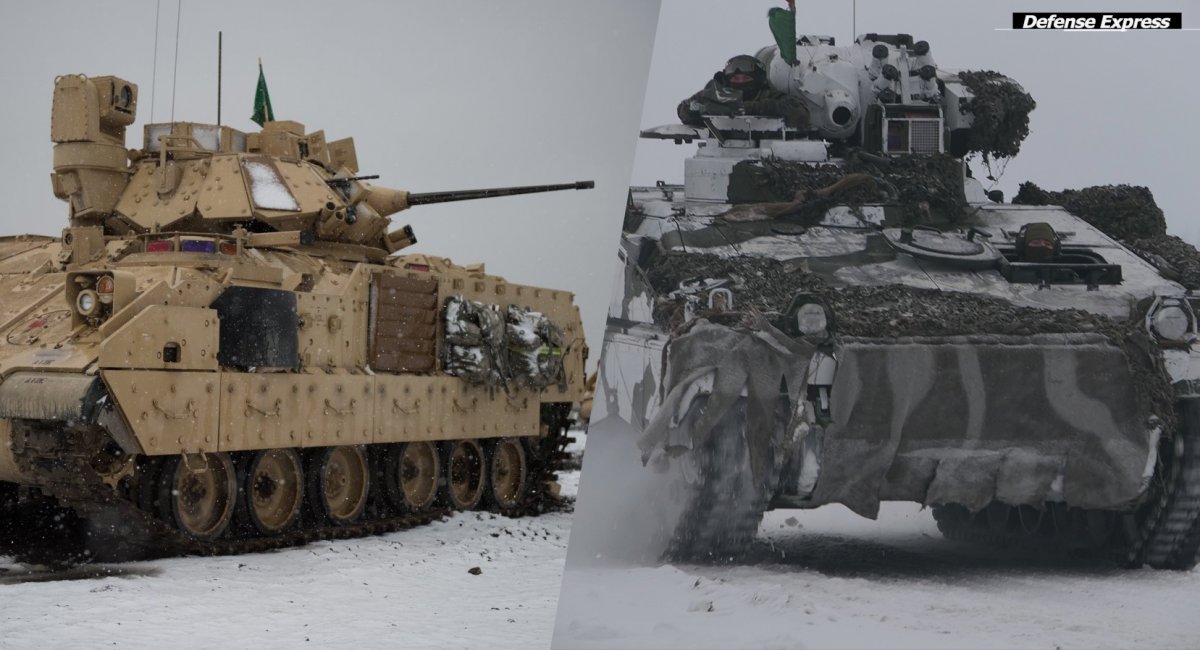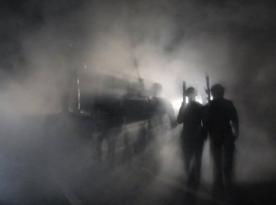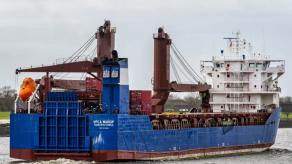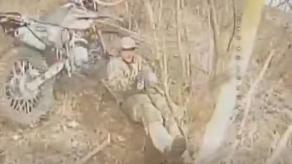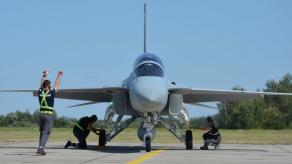A "face-to-face" comparison of two pieces of equipment like a race in maximum road/off-road speed of a few tons of difference in combat mass is indeed a thankless job because actually, it sometimes is not the parameters showing the real combat effectiveness.
Especially since usually we look at weapons meant to fight against each other, yet when it comes to Marder and Bradley that is absolutely not the case, as both of them will fight the russians. So the question is, which one will prove more effective in doing so.
Read more: 40 Marder Vehicles by March: Germany Reveals to the Pace of Long-Awaited Deliveries, How Many More to Expect Afterward
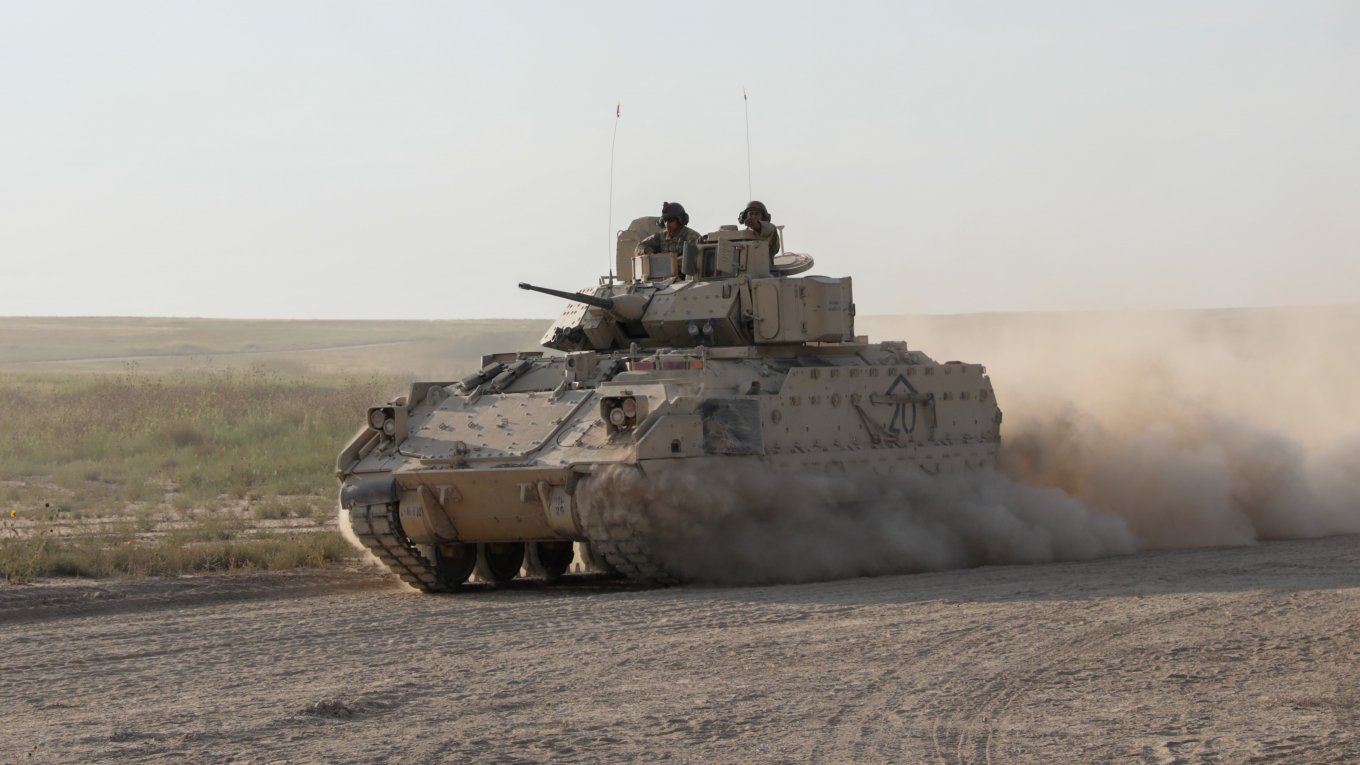
Right away we should take note of a positive aspect: both Marder and Bradley were created just as combat vehicles to fight against Soviet equipment which is still predominant in the russian army (and this tendency will only grow deeper). In other words, the conceptual solutions laid into their foundation of the initial design and developed over the years of modernization give us a reason to say that Marder and Bradley have hit the element they were created for.
First of all, we should consider the firepower. Marder has a 20mm non-stabilized Rheinmetall Mk 20 RH-202 gun with a crazy rate of fire 800–1,000 rounds per minute. But – once again about the comparison of numbers – in practice, the shooting is made with short bursts, and not in a way of uncontrolled wave of fire. The 200-millimeter ammunition is able to penetrate the front armor of any sample of Soviet lightly armored vehicles: BMP-1/2 infantry fighting vehicles, all the BTR-type armored carriers and BMD-type airborne assault vehicles, too.
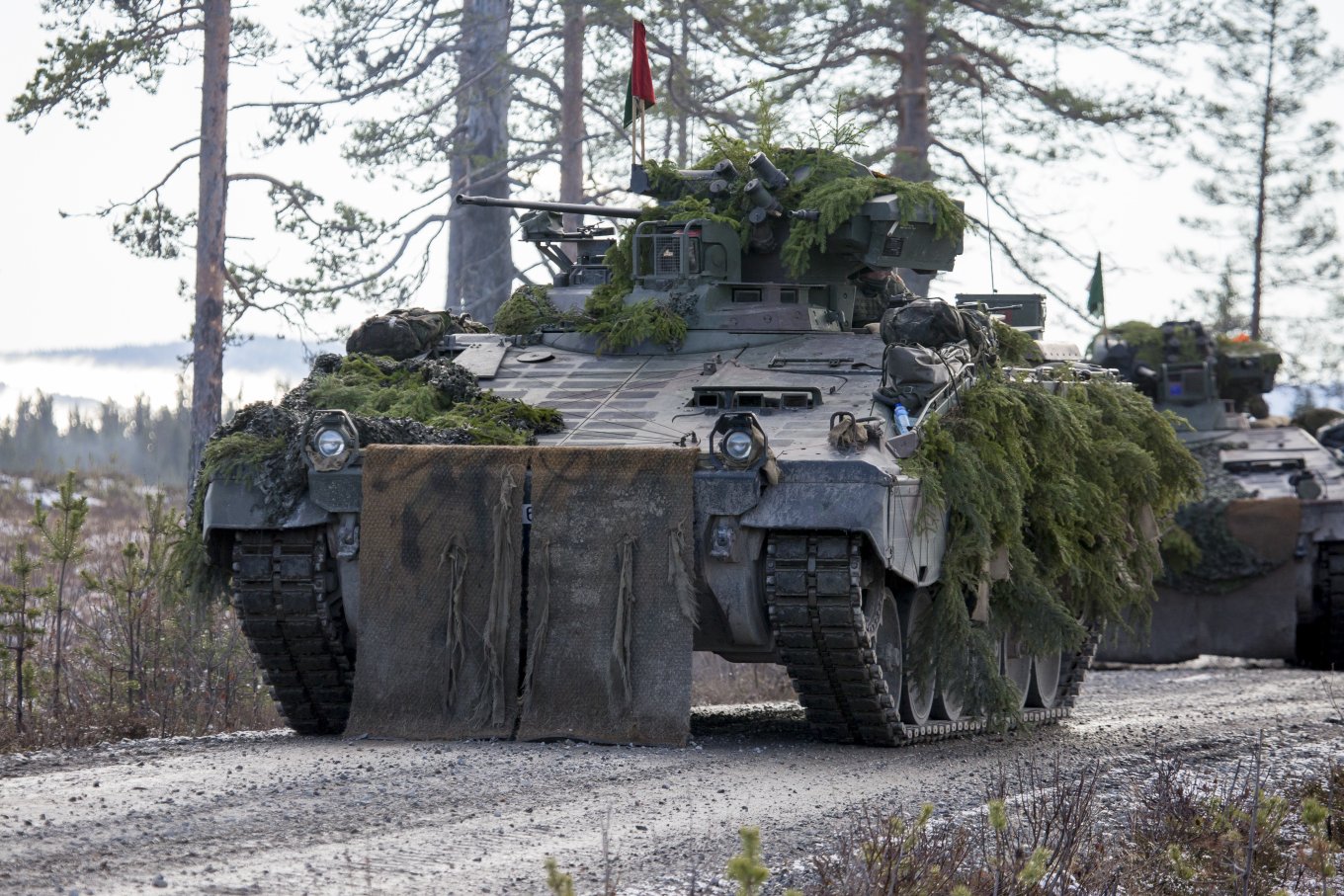
As for the BMP-3, it is better to wait for proven results because russia declares the vehicle to have reinforced armor while its real durability is questionable. However, the sub-caliber DM63 APDS-T projectile can pierce up to 70 mm of armor (at 90° angle) from a kilometer distance.
Bradley has a 25mm М242 gun firing sub-caliber M919 APFSDS-T with a core of depleted uranium. The piercing capability is not known exactly but it must be much better than of the smaller DM63 APDS-T. The gun is stabilized in two planes, it can rotate with a speed of up to 60 degrees per second.
As for anti-tank capabilities, Bradley's TOW missile can be confidently considered much better than Marder's Milan due to a number of reasons: almost twice as big firing range and the function for the operator to launch a missile without leaving the armored turret.
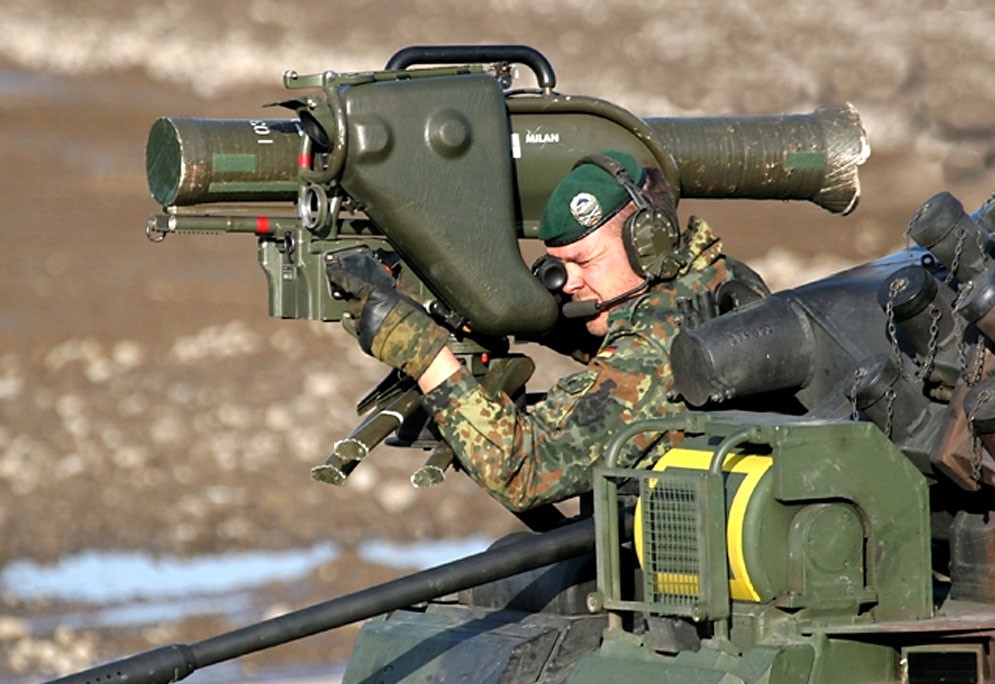
The comparison of communication means is likely won by the American competitor since the Bradley M2A3 version demonstrated in 2010 is an entirely digitally controlled combat vehicle. The commander's panorama and fire control system are almost identical to the ones on M1A2 Abrams, including the target tracking. The availability of similar systems on Marder is reasonably doubtful.
By the way, the same goes for the Bradley's role as not just a weapon or a safe personnel carrier, but a full-fledged command center responsible for combat reconnaissance and target designation for the infantry unit thanks to the FBCB2 data system. Meanwhile, Marder got an encrypted radio receiver only in the 1A3 modification.

Moving next to the protection of Marder and Bradley, the two are conditionally equal, both can stop a 30mm round. Although Bradley can be also equipped with overhead protection which is supposed to effectively guard from anti-tank grenades.
Often, following the Soviet tradition, the size of vehicles is compared. Interestingly, Bradley is frequently referred to as a giant vehicle, "monstrous', even. Certainly, the American combat vehicle is 2.98 meters tall, about 50 cm taller than Soviet BMP-2 currently used by Ukrainian forces.
Incidentally, Bradley is as tall as Marder. This was made for the comfort of the crew and the landing squad in order to make their accommodation and leaving the vehicle adequate, in contrast to some well-known vehicles. Personnel moves in and out of Bradley and Marder via a ramp.
Unfortunately, we couldn't find a photo to illustrate the difference in size between Bradley and BMP-2, but here's a photo from Bosnia, 1998, where the American IFV and a russian BTR-80 (2.3 meters tall) are standing next to each other.
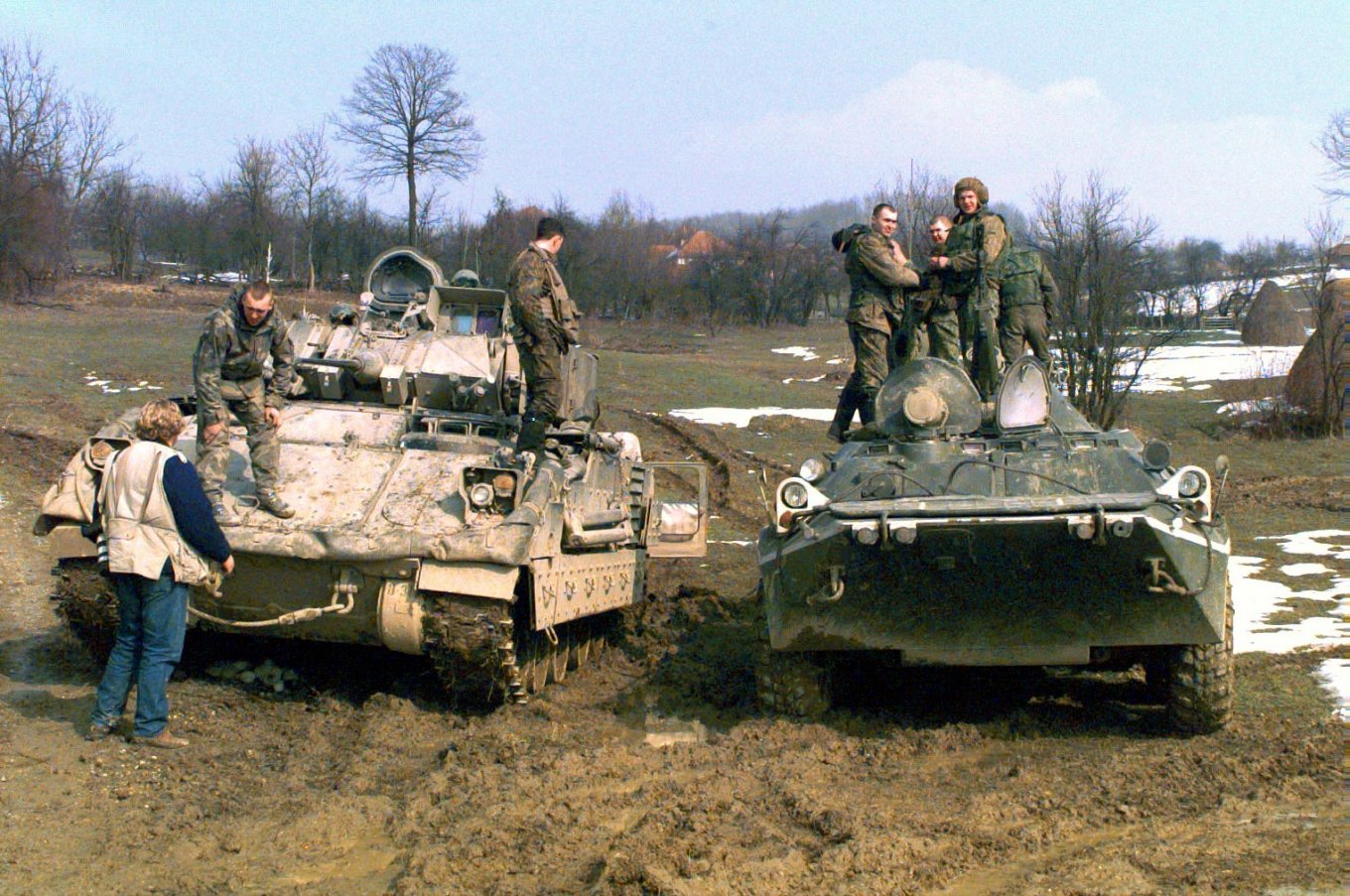
Finally, a few words on mobility. Once again, both vehicles are relatively on the same level: the weight is approximately 35 tonnes, have 600 hp engines and torsion bar suspension, and both lost their amphibious capabilities.
So all that's left is to summarize that the gap of precisely 10 years between the adoption of Marder and Bradley by their respective armies did make a difference. Quite certainly we can say that the conceptual ideas of Marder have been reflected in the final version of Bradley, the creation of which was a tough path to walk.
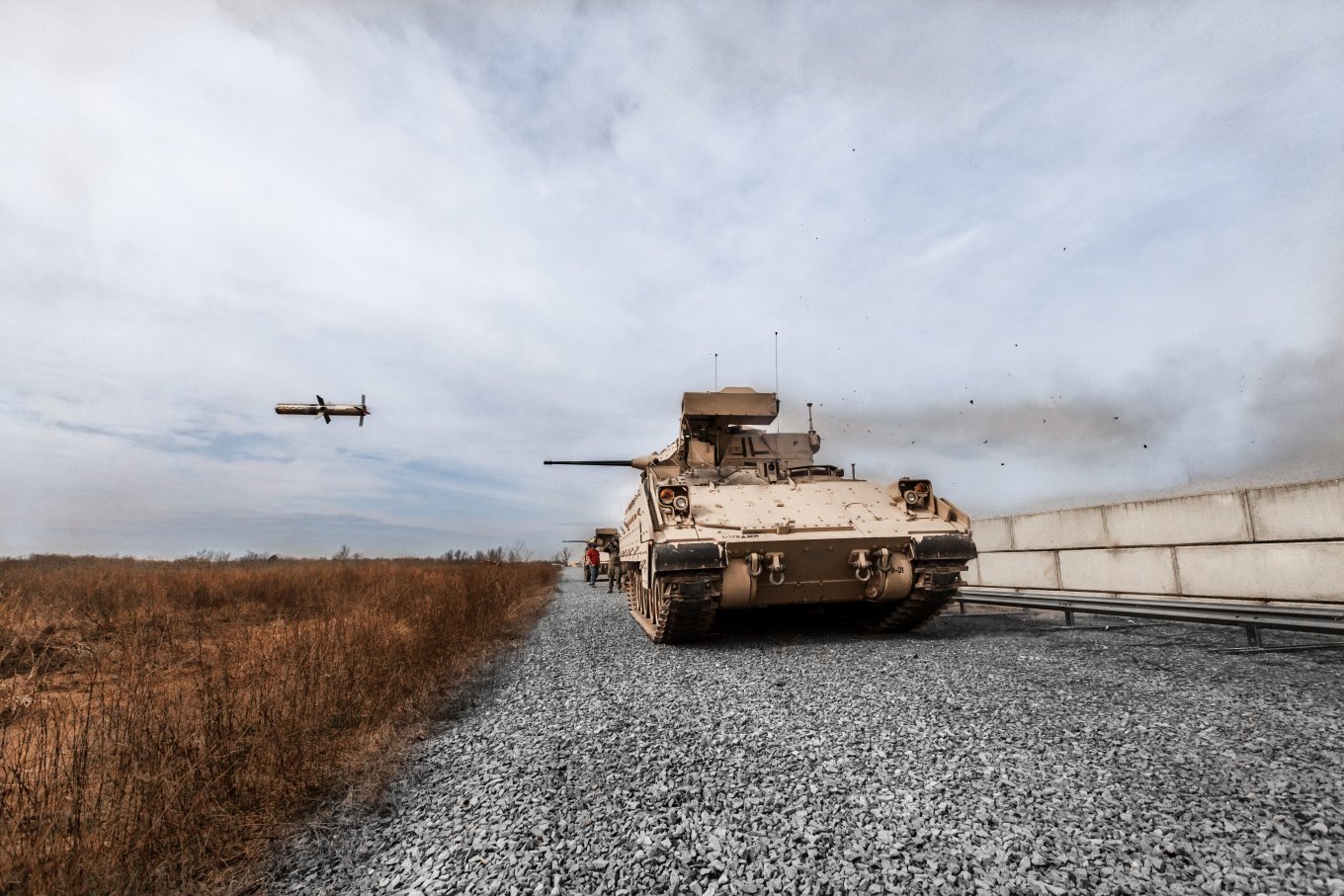
Read more: The AMX-10RC: Specifics of This Wheeled Tank, Its Place On the Battlefield




